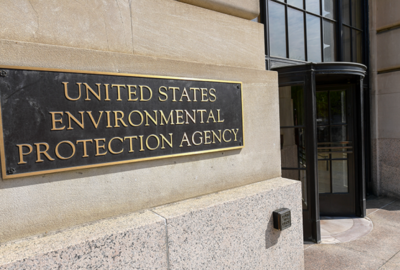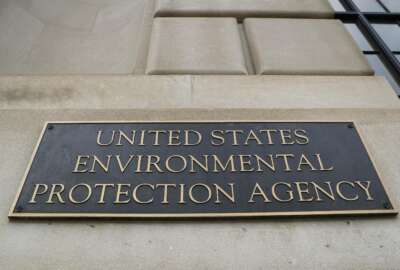Hubbard Radio Washington DC, LLC. All rights reserved. This website is not intended for users located within the European Economic Area.
On Air: Federal News Network
Trending:
Suspect pet product collared by EPA IG
A potent brand of bug-killing dog and cat collars has killed thousands of dogs and cats. The EPA has known about the Seresto Pet Collars for years.
A potent brand of bug-killing dog and cat collars has killed thousands of dogs and cats. The Environmental Protection Agency (EPA) has known about the Seresto Pet Collars for years. Problems even reached the ears of Congress, which investigated the collars and the EPA a couple of years ago. Now the agency’s office of inspector general has released a detailed look at the matter with a long list of recommendations. For more, Tom Temin spoke with Paul Bergstrand, the Assistant IG for Special Reviews and Evaluations.
Interview Transcript:
Tom Temin And tell us, first of all, what happened here. There’s a long list of reports coming in from the public about this particular product. Tell us the background here.
Paul Bergstrand So Seresto Pet Collars are intended for use on dogs and cats, and they’re meant to control fleas, ticks, mosquitoes and other pests. In March of 2021, media reports that there were over 1500 pets had died and many more of them fallen ill while using Seresto Pet Collars. And by November 2022, the EPA had received more than 2500 pet incident reports and nearly 900 human pesticides incident reports.
Tom Temin Right. So people by the thousands were calling the EPA. You wonder where else they were calling this. It could have been many, many reports beyond that, I suppose.
Paul Bergstrand Yeah. These are the numbers we have.
Tom Temin Sure. So the EPA was aware. And what is the proper role of EPA here with respect to, I guess, it’s considered a pesticide that comes under EPA purview.
Paul Bergstrand Correct. The EPA registers all pesticides sold or used in the United States, and they did so for Seresto in 2012, registering them. And then every 15 years, there’s a registration review process where the agency looks at any issues that may have come up since it was originally registered.
Tom Temin Right. So if dogs and cats were dying, the EPA has the authority to find out if those collars were the cause of those deaths and then take action if it deems necessary.
Paul Bergstrand Yes. And since it registered in 2012, it received over 100,000 reports of such incidents.
Tom Temin Wow. So what happened? What did the EPA do or failed to do in your view?
Paul Bergstrand Well, as you said in your beginning, the EPA actually reviewed this in 2016, and they found that 45% were possible of probable causes of death to the animals was these collars. And then there was this uptick in 2021. And so what we took a look at was the initial pesticide registration and then the subsequent review. And we found that the review that was done missed some key aspects that the EPA had committed to specifically doing the domestic animal testing. And in the other finding we had was that it really lacked some key data to be able to collect on the incidents. It was receiving information on.
Tom Temin Right. So it should have done its own animal testing or commissioned, I guess, they can contract that particular thing out if they want.
Paul Bergstrand Yes, there are different procedures and that’s one of our findings. It didn’t really have standards or procedures for doing that. So sort of the how it would do that is something that the agency still has to work out.
Tom Temin And just out of curiosity, if there was an uptick, could they also look into the question of whether the manufacturer added something to the formula that was originally approved and make sure that they weren’t making it more potent and therefore more lethal to some of the animals?
Paul Bergstrand Under the law and regulation, the agency has wide authority to collect information, and I’m sure it has that ability.
Tom Temin Right. So what prompted the IG to look into this?
Paul Bergstrand We also received complaints through our hotline of pet deaths or injuries. And in response we started this evaluation.
Tom Temin All right. And what did you find?
Paul Bergstrand Two big findings were that they didn’t do the studies that are committed to doing. And then it didn’t also make that public. So EPA committed to saying forthrightly, whether or not that assurance that the products could be used without adverse effects to the pets, and it didn’t do that, and it hasn’t made it public for comment.
Tom Temin And do we know this is outside of the scope of your report? But do we know whether, like the Federal Trade Commission or the Consumer Product Safety Commission was aware of these collars at all?
Paul Bergstrand I don’t know that off the top of my head.
Tom Temin Because any one of those agencies could raise the flag. And you say the EPA does have the authority to say, you got to stop selling this or something like that, or can they issue warnings.
Paul Bergstrand What it can do, we can require certain labeling. And in fact, July of last year, the agency did come out with a memorandum where it talked about increased notices on the labeling, on warnings that you might call it. So we can certainly do that. And part of the initial registration process is to review the labeling for safety information about the pesticides.
Tom Temin Got it. We’re speaking with Paul Bergstrand. He’s assistant inspector general for special reviews and evaluations at the EPA. So you found that there was testing they should have done and some other procedures they did not follow. Your recommendations then were to go ahead and do those things.
Paul Bergstrand We had eight recommendations and a few areas. One of them, the biggest, was to go back and look at the interim proposed registration and do what a committed to. And our other recommendations a few related to increase data collection and then policies procedures for vetting the pesticides and the pet collar.
Tom Temin Yeah because this report is about this particular brand, Seresto. Are you aware of or were they aware of any other manufacturers that use the same formulation? Or maybe it was sold under some off label at Costco?
Paul Bergstrand I’m not aware of any other products, but we designed this report to be applicable to the entire process for any kind of pet product.
Tom Temin Got it. And not just collars, but I suppose anything that is for anti tick and flea and mosquito type of thing for animals.
Paul Bergstrand Any product that is applied to the skin, a pesticide has to be reviewed by the EPA.
Tom Temin Ok. And are they going to go back and do the animal testing and so on in the data gathering that they promised originally?
Paul Bergstrand We have a good engagement with them on this topic. They responded to our report saying that their 2023 memorandum achieve some of what we asked for in our first recommendation about the registration. We aren’t quite seeing that because again, it didn’t talk about the assurance that it can be used without adverse effects. And it also didn’t provide its rationale publicly and didn’t allow for public comment. And we think that’s really important. So we’ll be continuing conversations with the agency on how they can meet recommendation one.
Tom Temin There must be a lot of dog and cat owners at EPA that are concerned about this.
Paul Bergstrand I would imagine so.
Tom Temin Are you one, by the way?
Paul Bergstrand I grew up with dogs, cats, rabbits, every animal almost that you can imagine. And so I definitely feel the connection and desire to get it right.
Editor’s note: Federal News Network received the following statement from Elanco Animal Health, which markets the Seresto Pet Collars:
“It is a well-established pharmacovigilance and regulatory principle that adverse event or incident reports are simply reports that must be investigated and do not indicate causation. While it is true that EPA has received incident reports, the comprehensive data reviewed by EPA in consultation with FDA’s Center for Veterinary Medicine, and other independent experts, show no established link between pet deaths and the active ingredients in Seresto. In fact, a robust, multi-year scientific review completed by the EPA in July confirmed this and found Seresto continues to meet EPA’s standards for registration, meaning that Seresto does not pose unreasonable risks. Furthermore, we note that nowhere in the recent OIG report or in the interview detailed in your story does OIG characterize Seresto as “dangerous.” All available data supports the safety profile of Seresto.”
Copyright © 2024 Federal News Network. All rights reserved. This website is not intended for users located within the European Economic Area.
Tom Temin
Tom Temin is host of the Federal Drive and has been providing insight on federal technology and management issues for more than 30 years.
Follow @tteminWFED
Related Stories
Related Stories
-
EPA targeting higher recruitment numbers for 2024 Hiring/Retention
-
EPA gets long to-do list from its inspector general Agency Oversight
-
EPA keeping its finger on the workforce’s pulse with HR analytics Open Data/Transparency




